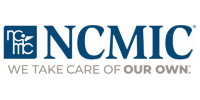INSIDE THIS REPORT: 1. NBCE Redesigns Web site 2. 2008 Annual Meeting Results 3. NBCE Updates Part IV Eligibility Policy 4. Part I and Acupuncture Test Committees Meet 5. Part IV Test Committee Gathers 6. NBCE International Update 7. NBCE Calendar 1. NBCE Redesigns Web site The NBCE launched its redesigned Web site in June. Please visit www.nbce.org to see the changes. The site has been reorganized to include information that was previously available only through printed materials. For example, examinees may now find test plans, test schedules and lists of reference texts for the written examinations online. Popular features such as online applications and online score reporting will continue to be available. The redesigned site is organized into two sections: one for examinees and one for professionals. The information for examinees includes written, practical and post-licensure examination information. The professionals section includes information about the NBCE Board of Directors, as well as the NBCE reports and publications, and links to other chiropractic organizations. The redesigned site features expandable menus for navigation between pages. In the coming months, we plan to add more features to the site, including RSS feeds and streaming video. The NBCE Web site is always the first and best place to seek information about this organization and we hope you will visit it often. 2. 2008 Annual Meeting Results It was gratifying to see so many of you at the meeting in Atlanta. On behalf of the NBCE Board, we are grateful for your confidence in the direction and leadership of the NBCE. A total of 39 voting delegates and alternates attended the NBCE business meeting. We truly believe that the voice of the delegate body is most effective when it is the voice of many! Dr. Ted Scott (Utah) was re-elected by acclamation to his second term as District IV Director. Additionally, the Executive Committee was returned with President Dr. Vernon Temple, Vice President Dr. Ed Weathersby (Arizona), Secretary Dr. Mary-Ellen Rada (New Jersey), and Treasurer Dr. Ted Scott. Proposed NBCE Bylaws Revisions The main purpose for all corporate and non-profit bylaws is to provide a blueprint for the operation of an organization. The existence of bylaws frees directors and management to manage and govern in a transparent and accountable manner—to concentrate on the true mission of the organization. The delegates and alternates therefore continue to fulfill their responsibility to provide input to the NBCE, not just for a year or two but into the 21st century. We sincerely appreciate that the delegates and alternates put so much thought and effort into re-examining the NBCE bylaws. Proposal 1 passed, amending the NBCE’s mission to clarify that our activities must be in the best interests of the Corporation (NBCE) and chiropractic testing. Proposal 2 passed, creating term limits for directors, reclarifying eligibility requirements and terms of service for district directors and FCLB-appointed directors. Proposal 4 passed, thereby eliminating the position of chairman of the board with the president serving as the presiding officer over meetings of the Executive Committee and Board. Proposal 5 passed, clarified that bylaws amendments will become effective at the adjournment of the Annual Meeting of Delegates, and that meetings will be governed by the Robert’s Rules of Order Newly Revised. The proposal also detailed the process for possible removal of an officer and the requirement that two-thirds of the entire board must vote to do so. Proposal 3 failed; it suggested a process for enacting change in the bylaws. FCLB Funding This past year, the National Board concentrated on revitalizing our relationship with the FCLB, especially to ensure their future financial stability and ability to support state licensing boards. The NBCE’s efforts have been directed towards the development of a funding plan to allow both organizations to accomplish their independent missions and yet to ensure financial stability. We are moving forward with an agreement that will provide funding for the FCLB for the year 2009 and beyond. We look forward to providing more details in the near future. Please visit www.nbce.org to view the 2008 NBCE Annual Meeting pictures, revised bylaws and press releases. 3. NBCE Updates Part IV Eligibility Policy Notices have recently been mailed to all state licensing boards that the eligibility requirements for the Part IV Practical Examination will change effective with the May 2009 administration. The new requirements will be: • The successful completion of all subjects in Part I • A graduation date falling within six months of the Part IV administration • Sign-off by the college registrar indicating the student is academically prepared to take Part IV Modifications to the current requirement will better accommodate the great diversity of course sequencing in the chiropractic curricula, as well as the wide range of graduation dates existing among chiropractic programs in the United States and Canada. 4. Part I and Acupuncture Test Committees Meet The Part I and Acupuncture test committees were held on April 18-19, 2008, at the headquarters of the National Board of Chiropractic Examiners (NBCE) in Greeley. NBCE District I Director Dr. Robin Lecy attended the test committee meeting and expressed his gratitude for the test committee members’ hard work. “Thank you for taking some of your valuable time and coming here today,” he said. “Your expertise and knowledge is appreciated by the Board. Your dedication to the test committee process is an integral part of our exam development; in fact we couldn’t do it without you.” During the two-day meeting, the test committees selected items that they felt would best assess an examinee’s knowledge. To ensure the fairness of the examinations, the test committees are composed of college instructors, subject matter experts and state licensing board members. These individuals are selected based on their expert knowledge of the subject matter. The NBCE examinations are offered twice yearly at chiropractic colleges across the United States and in several foreign countries. The Part I Examination is part of a battery of tests that candidates must pass prior to becoming licensed doctors of chiropractic. Part I consists of 110 standard multiple-choice questions in each of the six basic science areas: general anatomy, spinal anatomy, physiology, chemistry, pathology, as well as microbiology and public health. NBCE written examinations are accepted for initial licensure in all 50 states and the District of Columbia. Acupuncture is an elective exam for individuals who have received acupuncture instruction while in chiropractic college or those who have already graduated from chiropractic college, have complete 100 hours of acupuncture instruction and want to demonstrate their knowledge of the subject matter. This exam consists of 200 multiple-choice questions. Part I attendees were: General Anatomy: • Chad Maola, D.C., NBCE Staff Chiropractic Specialist and Moderator • Sheldon P. Clayton, Ph.D., Sherman College of Straight Chiropractic • Steve W. Kirk, D.D.S., Parker College of Chiropractic • Kim L. Swineheart, D.C., Northwestern Health Sciences University Spinal Anatomy: • Heather Kauffman, D.C., NBCE Moderator • James R. Carollo, M.S., Western States Chiropractic College • Christopher Coulis, D.C., University of Bridgeport, College of Chiropractic • John H. Romfh, Ph.D., Life University College of Chiropractic Physiology: • Kathleen Jones, Ph.D., NBCE Moderator • Kashif A. Ahmad, Ph.D., Northwestern Health Sciences University • Louis J. Freedman, D.C., Palmer College of Chiropractic, Davenport • Christopher A. Meseke, Ph.D., Palmer College of Chiropractic, Florida Campus Chemistry: • Jim Schreck, Ph.D., NBCE Moderator • John Gutweiler, Ph.D., Logan College of Chiropractic • Marc P. McRae, D.C., National University of Health Sciences • Bert Silverman, Ph.D., Life University, College of Chiropractic • Verena Van Fleet, Ph.D., Northwestern Health Sciences University Pathology: • Greg Crawford, D.C., NBCE Moderator • Samir Ayad, M.D., Southern California University of Health Sciences • Cynthia B. Gibbon, D.C., Sherman College of Straight Chiropractic Microbiology and Public Health: • Michelle Clark, D.C., NBCE Moderator • Shahla Abghari, Ph.D., Life University, College of Chiropractic • Sameh A. Awad, M.D., Southern California University of Health Sciences • Kim B. Khauv, D.C., Life Chiropractic College West Acupuncture attendees were: • Martin Kollasch, D.C., NBCE Staff Chiropractic Specialist and Moderator • Bruce Shotts, D.C., NBCE Moderator • David Dresner, D.C., Florida Practitioner • Manual A. Duarte, D.C., National University of Health Sciences • Michael D. Jacklitch, D.C., North Dakota Practitioner • Mary M. Jennings, D.C., National University of Health Sciences • Peter D. Lichtenstein, D.C., Northwestern Health Sciences University • Teresa Marshall, D.C., Minnesota Board of Chiropractic Examiners • Denise C. Natale, D.C., Vermont Board of Chiropractic • Gary Rosquist, D.C., Utah Practitioner 5. Part IV Test Committee Gathers Part IV test committee members gathered on June 20-21, 2008, at the National Board headquarters in Greeley, Colo. NBCE Executive Vice President Horace Elliott welcomed the test committee members and I addressed the group to express the Board’s appreciation for their efforts on this project. Sixteen participants from across the United States, who were chosen to review patient case scenarios and select case-related questions for the Part IV Practical Examination to be administered in November 2008 and May 2009. Part IV assesses clinical skills in diagnostic imaging, chiropractic technique and case management for applicants seeking state licensure. The NBCE Part IV Examination was administered for the first time in January 1996 and has been administered twice yearly to a total over 39,000 doctors. Part IV is presently accepted by 48 states and the District of Columbia for initial licensure in chiropractic. Part IV test committee members were: • Dr. David Allen, Mississippi • Dr. Mark Bledsoe, South Dakota • Dr. John Calisesi, Iowa • Dr. Gary Carver, Missouri • Dr. Marc Cohen, Pennsylvania • Dr. Frank Corner, North Dakota • Dr. Shannon Gaertner-Ewing, Idaho • Dr. Scott Hansing, Montana • Dr. Scott Kilmer, New York • Dr. Richard Lacey, South Carolina • Dr. Paul Morin, Maine • Dr. Harold Rasmussen, Washington • Dr. Duane Sadula, Maryland • Dr. Albert Stabile, New Jersey • Dr. Richard Tollefson, Minnesota • Dr. Rosemary Zimmerman, Alaska 6. NBCE International Update National Board of Chiropractic Examiner’s (NBCE) Director of International Operations, Dr. Martin Kollasch, visited Han Seo University in Korea during the month of June. At Han Seo University, students who study nursing, chiropractic, dentistry and other health sciences receive all their basic sciences as a group. Currently, 20 students plan to follow their bachelor degree program with entry into the chiropractic program, which is equivalent to a two-year master’s degree. In the second year, students transfer to the University of Bridgeport, College of Chiropractic, to complete their chiropractic education and receive their doctor of chiropractic degree. There is no legislation in place that protects the chiropractors of Korea. Chiropractors can be fined and imprisoned. Han Seo University is therefore seeking accreditation of a doctor of chiropractic program from the Council on Chiropractic Education Australasia (CCEA). With CCEA accreditation, Han Seo University is committed to encouraging legislation to officially recognize the profession, and to recognize licensed chiropractors as those who have graduated from an accredited program and who have completed the NBCE examinations. Also, in support of the chiropractic profession in Korea, Dr. Kollasch attended the World Federation of Chiropractic (WFC) council meeting. He was able to visit the WFC’s meeting as an observer during the same time as the Han Seo visit. In other NBCE international news, Italy passed chiropractic legislation in December 2007. In pursuit of establishing independence from the medical profession, the Italian Chiropractic Association (ICC), which is now recognized by the World Federation of Chiropractic (WFC), has asked for assistance from the National Board of Chiropractic Examiners to develop formalized protocals for recognition of chiropractors in Italy. The ICC requested examples of examinations similar to those that U.S. students must successfully complete for the NBCE. 6. NBCE Calendar Fall National Written Exams Administration- September 12-14 Part IV Practical Exam Administration- November 14-16 National Board of Chiropractic Examiners 901 54th Avenue Greeley, Colorado 80634 970-356-9100 To view the full report in Portable Document Format ( PDF ), click on the link below:
Source




